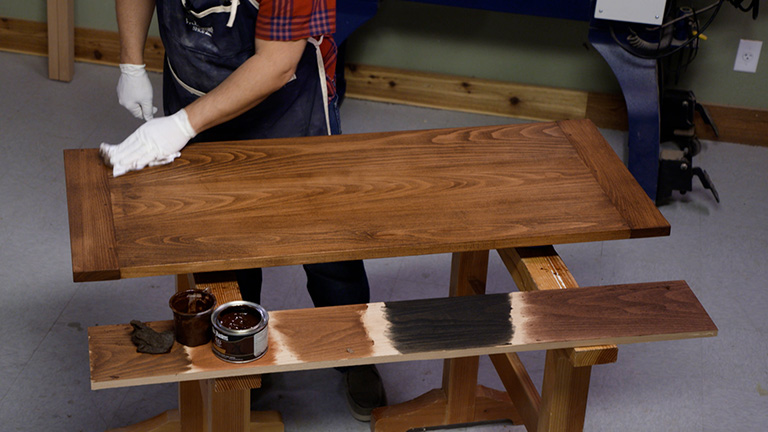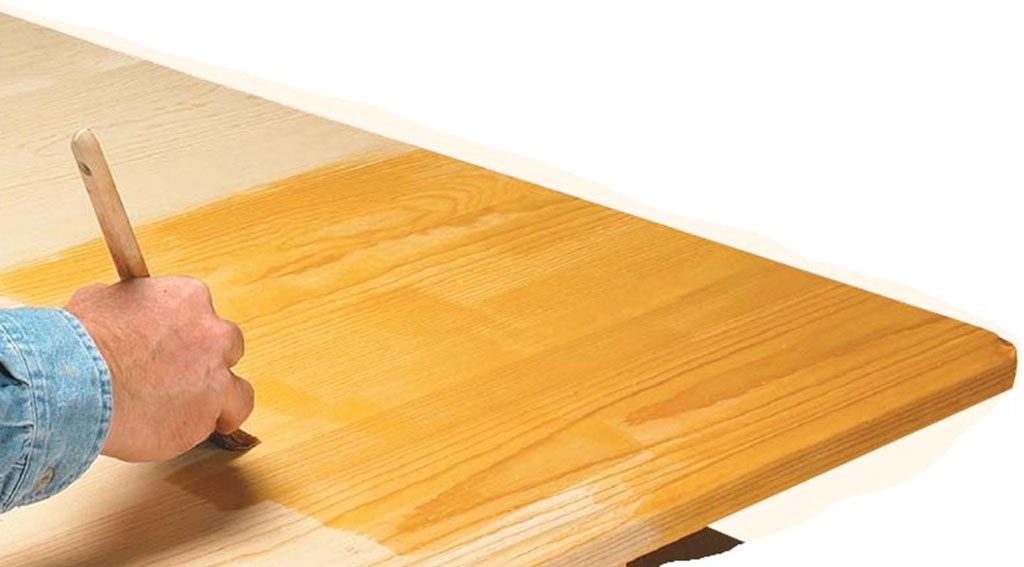
Choosing the right finish for a project is just as important as any of the joinery and molding details. And for furniture that’s done in a rustic or antique style, I’ll often use milk paint. It has a dull, flat sheen that looks great on traditional styles of furniture.

WHAT IS MILK PAINT? Milk paint is so named because milk was added to lime, chalk, and natural pigments to create the liquid paint. The protein casein in milk makes an excellent binder for the other ingredients. The result is a tough, longlasting paint.
POWDERED PAINT. Fortunately, you no longer need to milk a cow or head to the dairy aisle of your grocery store to try milk paint. You can buy authentic, casein-based milk paint in a convenient powdered form, like that shown above. All you have to do is mix the powder with water before using it (see photos directly below.)

Powdered milk paint is available in twenty different traditional colors. (Woodcraft.com) Best of all, milk paint is non-toxic, has very little odor, and dries so quickly you can apply a second coat in an hour. One thing to keep in mind, however, is that it’s best to mix only as much paint as you need. Because of the organic nature of milk paint, it will start to thicken and turn bad after a few days. (If you need milk paint with a longer shelf life, take a look at the box below.)

TECHNIQUES
What really makes milk paint stand out though is not how it’s made, but how it’s used. Milk paint lends itself to a number of different techniques that are great for creating custom effects or making a new project look old.
WASH COAT. For starters, you can a create a softer, faded look by using a “wash coat” of milk paint. Simply use more water when mixing up the paint to create a weaker color. The thinned down paint acts more like a stain, allowing some of the character of the wood to show through the finish, such as you would find on a weathered piece.

BLENDING. You can also blend milk paint colors by combining the powders before adding the water. For example, adding white milk paint to any of the other colors will lighten the shade. This gives you a much wider range of tints.
LAYERING. One of the more interesting techniques that can be done with milk paint is to create a worn, distressed look with multiple layers and colors of paint. The two photos below give you an idea of how this is done.

The technique consists of layering two or more different colors of milk paint and sanding through some in a few areas. A glaze can also be used to give the wood an aged appearance. While the process is pretty straightfoward, it requires a little practice to achieve the right look. Essentially, you’re trying to simulate the wear and tear that a piece of furniture might receive from being used and repainted over the years.

CRACKLE FINISH. One of my favorite milk paint effects is a crackle finish. As you can see in the photo below, the top layer of paint is cracked, revealing a different color of paint beneath.

To create this effect, you apply a crackling agent between the first and second coats of paint. Within minutes of brushing on the second coat of paint, it begins to crackle. The effect is quite dramatic.
TOPCOAT.
Although milk paint adheres very well, water or other liquids will leave stains on the dried paint. So it’s a good idea to apply a clear finish over the paint, such as lacquer, polyurethane, or shellac. (Just avoid waterbased finishes.)
Milk paint is a great finish for a wide range of projects. Once you give it a try, you’ll be hooked.
From the Can: Ready-to-Use Milk Paint

If you like the look of milk paint but don’t enjoy mixing up a fresh batch for every project, you may want to consider General Finishes’ line of milk paints. These paints come ready to use right out of the can. And unlike the powdered milk paints, they have a much longer shelf life.
In reality, these aren’t true milk paints. (They aren’t made from milk protein.) Instead, they’re water-based latex paints that simulate the look and color of traditional milk paints. You can still use them to create a lot of the same effects shown above, which is why they were chosen for the beadboard on the step-back cupboard on page 34.
Like powdered milk paints, General Finishes’ paints are available in a wide range of comparable colors.












